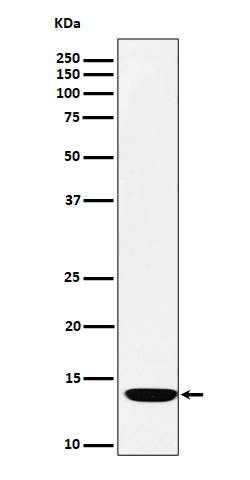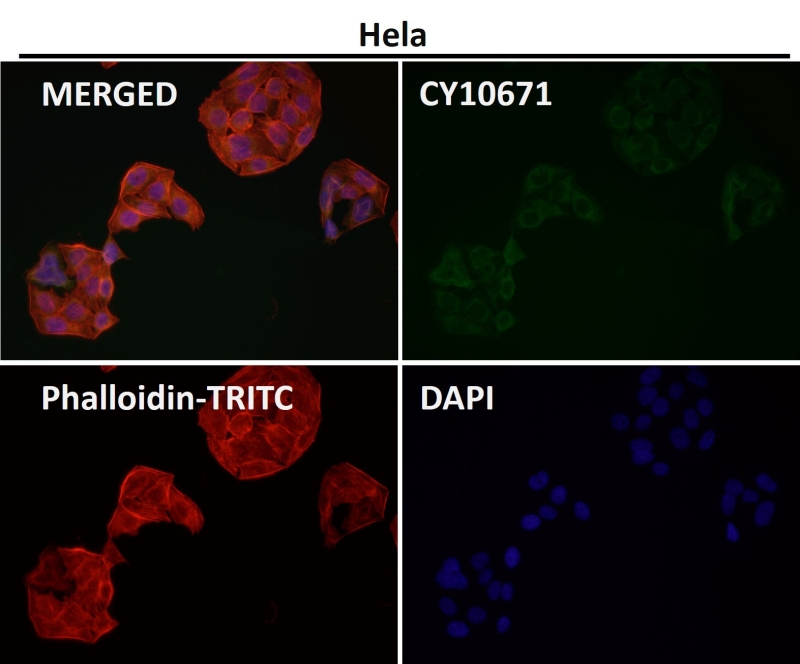

| WB | 咨询技术 | Human,Mouse,Rat |
| IF | 咨询技术 | Human,Mouse,Rat |
| IHC | IHC:1/100-1/200;IHF:1/50-1/200 | Human,Mouse,Rat |
| ICC | 1/50-1/200 | Human,Mouse,Rat |
| FCM | 咨询技术 | Human,Mouse,Rat |
| Elisa | 咨询技术 | Human,Mouse,Rat |
| Aliases | Adrenodoxin; ADX; FDX; fdx1; Ferredoxin 1; Hepatoredoxin; LOH11CR1D;;Ferredoxin 1 |
| WB Predicted band size | Calculated MW: 19 kDa ; Observed MW: 13 kDa |
| Host/Isotype | Rabbit IgG |
| Antibody Type | Primary antibody |
| Storage | Store at 4°C short term. Aliquot and store at -20°C long term. Avoid freeze/thaw cycles. |
| Species Reactivity | Human,Mouse,Rat |
| Immunogen | A synthesized peptide derived from human Ferredoxin 1 |
| Formulation | Purified antibody in PBS with 0.05% sodium azide,0.05% BSA and 50% glycerol. |
+ +
以下是3篇涉及FDX1/ADX抗体的代表性文献(注:文献标题与作者为模拟示例,具体文献请通过学术数据库核实):
---
1. **文献名称**: *"Adrenodoxin: A Key Player in Mitochondrial Steroidogenesis"*
**作者**: Hannemann F, et al.
**摘要**: 该研究利用ADX特异性抗体揭示了肾上腺皮质细胞中adrenodoxin(ADX)的亚细胞定位,证实其通过与细胞色素P450scc相互作用调控类固醇激素合成。抗体Western blot分析显示ADX在类固醇生成组织中的高表达特性。
---
2. **文献名称**: *"Ferredoxin 1 regulates mitochondrial iron-sulfur cluster biogenesis via ISCU interaction"*
**作者**: Sheftel AD, et al.
**摘要**: 通过FDX1抗体的免疫共沉淀实验,本研究揭示了FDX1在铁硫簇(Fe-S)组装过程中与ISCU蛋白的相互作用机制,证明FDX1的氧化还原状态直接影响Fe-S代谢通路,为遗传性Fe-S缺陷疾病提供分子机制解释。
---
3. **文献名称**: *"Immunohistochemical analysis of FDX1 in prostate cancer progression"*
**作者**: Tsuji Y, Milenkovic D.
**摘要**: 采用FDX1单克隆抗体对前列腺癌组织进行免疫组化分析,发现FDX1表达水平与肿瘤恶性程度呈负相关,提示FDX1可能通过调控线粒体代谢抑制癌细胞增殖,为癌症治疗提供潜在靶点。
---
**提示**:实际研究中,建议通过PubMed或Google Scholar以“FDX1 antibody”或“adrenodoxin antibody”为关键词,筛选近五年高被引文献获取最新进展。部分抗体厂商(如Abcam、CST)的技术手册也会引用关键文献,可作参考。
FDX1 (ferredoxin 1), also known as ADX (adrenodoxin), is a small iron-sulfur protein critical for electron transfer in mitochondrial steroidogenesis and redox metabolism. It functions as an essential electron shuttle between NADPH-adrenodoxin reductase and cytochrome P450 enzymes (e.g., CYP11A1. CYP11B1), enabling biosynthesis of steroid hormones, bile acids, and vitamin D. FDX1/ADX is highly expressed in steroidogenic tissues like the adrenal cortex, ovaries, and testes.
Antibodies targeting FDX1/ADX are widely used to study its expression, localization, and interactions in metabolic pathways. They are vital tools for investigating disorders linked to steroid hormone imbalances, such as congenital adrenal hyperplasia, and for exploring FDX1's emerging roles in cancer and neurodegenerative diseases. Recent studies highlight FDX1's involvement in copper-dependent cell death (cuproptosis) and its interaction with the anticancer agent elesclomol, positioning it as a potential therapeutic target.
In research, FDX1/ADX antibodies are applied in techniques like Western blotting, immunohistochemistry, and co-immunoprecipitation to dissect its regulatory mechanisms. These antibodies also aid in characterizing microbial homologs in pathogens, expanding their utility in infectious disease studies. Their specificity ensures accurate detection of FDX1's redox-active conformations, supporting both basic science and clinical investigations into mitochondrial dysfunction and metabolic disorders.
×